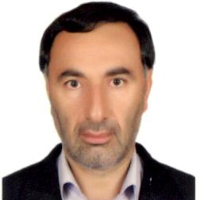Structural Pathology of Hadi Plan as the Most Comprehensive Rural Development Plan in Iran (Case Study: Kermanshah Province)
In Iran, the Rural Hadi Project is recognized as the first organized and comprehensive national effort to spatially organize villages. It is the most extensive and costly project that has been implemented in geographical areas in the country in order to develop villages. In a simple definition, Hadi Plan is a plan that aims at organizing and modifying the existing texture, the amounts of future expansion, and the way of using lands for various functions, such as residential, commercial, and agricultural lands, facilities and equipment, and general rural needs, as the case may be, in the form of approval for spatial plans and settlements. It determines rural or regional master plans. Taking an approach based on the limitation of physical changes in rural development, several projects have been implemented, all of which have sought rural development. Therefore, it is referred to as a comprehensive rural development plan and the most important tool for rural development management in Iran.One of the important measures that can help strengthen and sustain the positive effects of Hadi Plan is the pathology of the Rural Hadi Plan. In fact, this will lead to awareness of the experts’ views and opinions and identification of the strengths and weaknesses of the plan. Rural communities are perhaps the best evaluators of the functional impairments of Hadi Plan. According to the above, the main questions of the present study were as follows: What are the most important structural damages of the Rural Hadi Plan? What are the most important operational and executive solutions to eliminate the identified damages?
The present qualitative research was conducted within the framework of the interpretive-constructive paradigm and its governing method of analysis was thematic analysis. The statistical and target population included the experts and specialists of the Rural Hadi Project. The community included all the individuals at the provincial level and even the nationally recognized experts, who had scientific expertise and executive background for preparing and implementing the master plan. These people included the officials and senior managers, as well as the experts of the Housing Foundation of the Islamic Revolution, surveyors, consultants for preparing the master plan, contractors, consulting engineering companies, the fourth factor, and so on. The relevant data were collected through in-depth semi-structured individual interviews and group interviews, which were based on the theoretical saturation.
Based on the content analysis of the individual and group interviews conducted with managers, experts, specialists, etc., the identified structural damages included 3 comprehensive themes: extra-organizational, technical-executive, and managerial themes. Each of these themes was derived from several organizing themes (a total of 10 organizing themes), which themselves were identified from 105 basic themes.The identified themes in combination led to the formation of serious damages in the process of preparation and implementation of the Rural Hadi Plan. The effectiveness of this national and macro plan faced many challenges. Therefore, providing operational and executive solutions to solve these damages can be as effective as possible in the Rural Hadi Plan.
Pathology of all development programs and projects can help identify the challenges and issues facing them, present operational-executive solutions to solve problems, and provide the ground for their success as much as possible. Due to the increasing growth of the preparation and implementation of Hadi Plan in rural settlements of the country, the pathology of this design can be effective in further improving its performance. These damages can be grouped into 2 categories: structural and functional. Structural damage in this study meant all the processes related to the Rural Hadi Plan before its impact (its functional effect) on the rural community. The results showed that the most important structural damages of Hadi Plan could be grouped into 3 comprehensive themes: "external organizational", "technical-executive", and "managerial" themes. These resulted in 10 themes the organizer could obtain: damages related to the type of credit and the amount of its allocation, description of the project preparation services and instructions and the criteria for its implementation, handing over the project to the local authorities and maintaining them, preparation of the plan, project implementation monitoring mechanism, consultant (surveyor, design preparation consultant, and fourth agent) and contractor, selection of a village to prepare/review and implement the plan, selection of the type of executive project, schedule of the plan implementation, and approval and notification steps. Due to the uniform process of preparation and implementation of Hadi Plan throughout the country, the results of this study can be generalized to all other provinces in the country. Therefore, the thematic map prepared regarding the structural damage of the conductor design in this research can be used as a basis for solving the damages of Hadi Plan and optimizing its performance in other provinces. Since the output of any scientific study is providing operational and executive solutions to the problem under study, appropriate solutions were presented for each of the identified damages in this paper.
- حق عضویت دریافتی صرف حمایت از نشریات عضو و نگهداری، تکمیل و توسعه مگیران میشود.
- پرداخت حق اشتراک و دانلود مقالات اجازه بازنشر آن در سایر رسانههای چاپی و دیجیتال را به کاربر نمیدهد.


